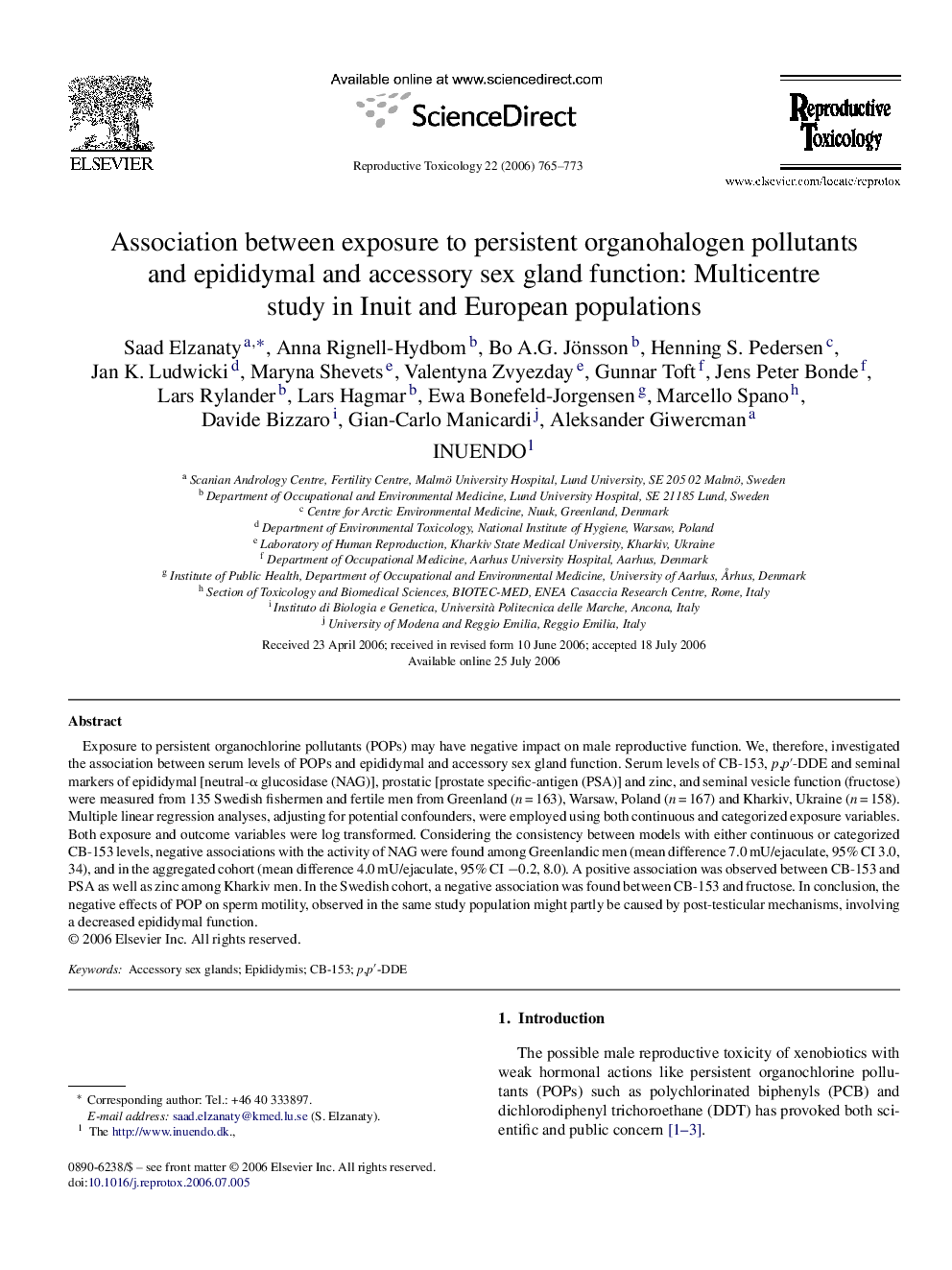| کد مقاله | کد نشریه | سال انتشار | مقاله انگلیسی | نسخه تمام متن |
|---|---|---|---|---|
| 2594643 | 1132275 | 2006 | 9 صفحه PDF | دانلود رایگان |

Exposure to persistent organochlorine pollutants (POPs) may have negative impact on male reproductive function. We, therefore, investigated the association between serum levels of POPs and epididymal and accessory sex gland function. Serum levels of CB-153, p,p′-DDE and seminal markers of epididymal [neutral-α glucosidase (NAG)], prostatic [prostate specific-antigen (PSA)] and zinc, and seminal vesicle function (fructose) were measured from 135 Swedish fishermen and fertile men from Greenland (n = 163), Warsaw, Poland (n = 167) and Kharkiv, Ukraine (n = 158). Multiple linear regression analyses, adjusting for potential confounders, were employed using both continuous and categorized exposure variables. Both exposure and outcome variables were log transformed. Considering the consistency between models with either continuous or categorized CB-153 levels, negative associations with the activity of NAG were found among Greenlandic men (mean difference 7.0 mU/ejaculate, 95% CI 3.0, 34), and in the aggregated cohort (mean difference 4.0 mU/ejaculate, 95% CI −0.2, 8.0). A positive association was observed between CB-153 and PSA as well as zinc among Kharkiv men. In the Swedish cohort, a negative association was found between CB-153 and fructose. In conclusion, the negative effects of POP on sperm motility, observed in the same study population might partly be caused by post-testicular mechanisms, involving a decreased epididymal function.
Journal: Reproductive Toxicology - Volume 22, Issue 4, November 2006, Pages 765–773